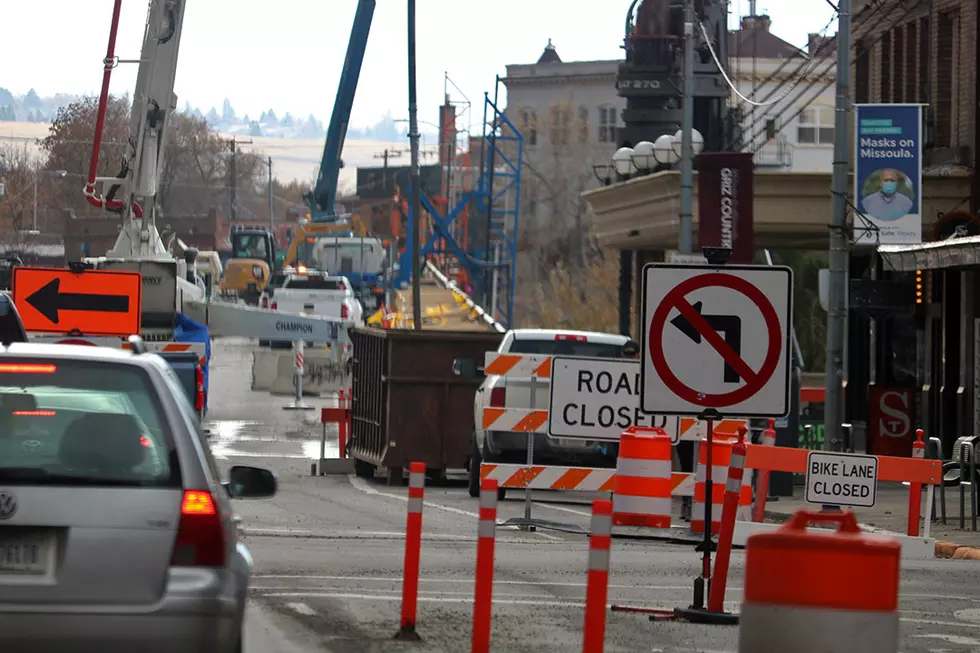
Gianforte names ARPA steering groups as lawmakers parse through federal guidance
HELENA (Daily Montanan) - A series of commissions formed to direct how Montana spends billions in federal COVID-19 aid dollars as part of the American Rescue Plan Act are beginning to kick into gear.
Gov. Greg Gianforte announced appointments to the four commissions on Wednesday. Each focuses on a different subsection of ARPA: infrastructure, communications and broadband, economic transformation and stabilization, and public health.
Under House Bill 632, legislation passed this session to implement the federal funds, three state senators, three to four representatives and three executive appointees will serve on each committee.
The commissions are set to begin regular meetings to hear proposals for the federal funds in early June, said Rep. Frank Garner, R-Kalispell, who carried HB632 this session. Some will field applications from local governments and other entities, while others, such as the broadband commission, will facilitate requests for proposals for specific connectivity projects.
“It’s been an extraordinary effort,” he said. “To think the ink is hardly dry on this thing, and we’re already putting the commissions out there and approving payments.”
The first ARPA commission to meet was the Economic Stabilization, Transformation and Workforce Development Steering Committee, which in early May approved a proposal from the executive branch for limited $1,200 payments to Montanans on unemployment benefits if they take a job and work for at least four weeks.
That policy came in concert with an announcement from Gianforte that Montana would no longer be participating in federally-funded enhanced unemployment benefits created during the pandemic.
And Thursday, the ARPA Health Advisory Commission is slated to meet in order to approve enhanced federal funds related to the federal Supplemental Nutrition Program for Women, Infants, and Children, better known as WIC, said Rep. Matt Regier, R-Kalispell, who sits on the committee.
That money, like many of the buckets within ARPA, is operating under its own timeline that requires approval before regular commission meetings begin in June.
The health commission will in future meetings also hear proposals related to enhanced SNAP benefits, child-care block grants, $22.5 million in vaccination rollout funds, telehealth expansion and more.
“We’ll be working with (the Department of Public Health and Human Services) on understanding what the allowable expenditures are and the timeline,” Garner said.
Other commissions will have significantly more flexibility in how they recommend to spend the funds. For example, broadband is one of the few areas in ARPA that does not have to be directly tied to COVID-19 so long as related investments are “necessary” — the same goes for sewer and water projects.
The state already has plans to leverage the federal funds for a massive investment in broadband expansion in Montana, one of the country’s least connected states.
“Our priorities for these commissions are to move resources quickly to Montana families and small businesses that have been hit hardest over the last year,” said House Minority Leader Kim Abbott, D-Helena. “We’ll have a specific focus on investment in infrastructure, like broadband, in a way that creates jobs and grows economic opportunities for years to come especially in rural areas and tribal communities.”
The state received a new round of guidance from the U.S. Department of Treasury on May 10, the day that the feds formally made available $350 billion in COVID recovery funds from ARPA to state, tribal and local governments. Each state receives a flat allocation of $500 million plus an additional chunk based on its unemployment level.
Montana directly receives around $900 million, while each county and the three largest municipalities receive separate allocations. Small local governments also have federal dollars set aside that they will receive through an allocation from the state.
Montana and most other states and local governments will receive the federal money in two tranches. They can begin applying for the first round of funds through a federal online portal immediately; the other chunk will be available in around a year.
Lawmakers who shepherded HB632 this session were clear that the state may have to tinker with its plans to distribute ARPA dollars as the federal government hands down more guidance. Garner aid legislative staff was still reviewing the 150-page interim final rule from the Treasury Department — “light reading,” as he called it — to determine what impacts it may have.
Some changes from the updated federal rule include a more specific definition for necessary broadband and water projects. For example, the new rule says that “eligible investments in broadband are those that are designed to provide services meeting adequate speeds and are provided to unserved and underserved households and businesses” and sets the expectation that projects receiving the aid money deliver symmetrical, 100 mpbs upload and download speeds.
The new rule is also more explicit in stating that general infrastructure projects that don’t relate to the pandemic or water, sewer or broadband are unlikely to qualify for ARPA funding.
Further guidance from the federal government is still expected as the Treasury fields public comment on the May 10 rule. Lawmakers and budget staff should have a handle on the major changes by the time regular steering group meetings start in June, Garner said.
